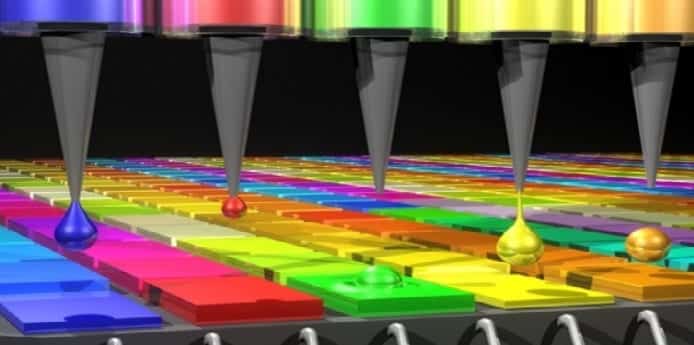MIT Scientists developed a Quantum Dot Spectrometer small enough to function within a smartphone
Table Of Contents
Quantum Dot Spectrometer created by MIT scientists is small enough to fit inside a smartphone camera and it empowers the device to diagnose skin ailments as well as detect environmental pollutants.
A Spectrometer is an instrument that records and measures the properties of spectra or light and it is widely used in physical, chemical and biological analysis and research purposes.
Usually, due to its huge size a spectrometer is not portable.
However, scientists at the Massachusetts Institute of Technology (MIT) have now developed tiny spectrometer by using minuscule semiconductor nanoparticles called as quantum dots. These Quantum Dot spectrometers are small enough to fit inside the camera of a smartphone.
Jie Bao, a former MIT postdoc and the lead author of the paper that describes the Quantum Dot spectrometers which has been published in the journal Nature, mentioned in his paper: “Such devices could be used to diagnose diseases, especially skin conditions, or to detect environmental pollutants and food conditions.”
About the new Quantum Dot spectrometer:
It was in early 1980s when scientists discovered the nanocrystals which were made up of combination of metals, such as lead or cadmium, with other elements that included sulfur, selenium or arsenic. These nanocrytals were termed as ‘Quantum dots’.
Scientists were able to generate umpteen number of dots by controlling the ratio of the starting materials, reaction time and the temperature. The dots thus generated had a difference in their electronic property which is termed as bandgap and this determined the wavelengths of light that each dot would absorb.
Measuring the size of a US quarter, the new quantum dot (QD) spectrometer is made up of hundreds of quantum dot materials which are arranged in such a way that each dot filters a specific set of wavelengths of light.
Scientists then created the optical structures by printing the quantum dot filters into a thin film and then placing it on top of a photo-detector such as the charge-coupled devices (CCDs) which are found in the camera of the smartphone.
An algorithm was then created by the researchers which analyzed the percentage of photons absorbed by each filter. The information was recombined from each one to calculate the intensity and wavelength of the original rays of light.
It was found that the resolution was directly proportionate to the number of quantum dots. Thus when the number of quantum dot materials is more it covered more wavelengths and in turn scientists were able to obtain higher resolution.
The QD spectrometer used by scientists in this case contained about 200 types of quantum dots that was spread over a range of about 300 nanometers. Scientists believe that by increasing the number of dots, spectrometers that can cover wider range of light frequencies can also be designed in future.
Bao said that when these QD spectrometers are incorporated into small hand held devices it can help to diagnose skin conditions or even analyze urine samples.
Besides, the tiny device can also be used for tracking vital signs such as oxygen level and pulse.
When skin is exposed to certain frequency of ultra violet light it can get damaged, hence the QD spectrometer can also be used to measure the frequency of the UV light so as to understand the safe frequency to which human skin can be exposed.
QD spectrometer is portable, unique and quite advantageous in terms of flexibility, simplicity, and cost reduction. The new QD spectrometer find its application not only for biological molecules and cell labeling but also for television screens and computers.

